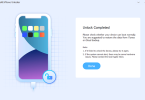Crafting a Minimum Viable Product (MVP) is a crucial step in the journey of Android developers. It serves as the foundation upon which successful apps are built, allowing developers to validate their ideas, gather user feedback, and iterate rapidly towards creating a polished product. In this guide, we will delve into the process of crafting an MVP specifically tailored for Android development.

Contents [hide]
- 1 Introduction to Minimum Viable Product (MVP)
- 2 Definition and Importance
- 3 Benefits of MVP for Android Developers
- 4 Understanding the Android Market
- 5 Market Research and Analysis
- 6 Identifying Target Audience and Their Needs
- 7 Defining MVP Features
- 8 Determining Core Functionalities
- 9 Designing the User Interface (UI)
- 10 Creating a Simple and Intuitive UI
- 11 Incorporating User Feedback into Design Iterations
- 12 Developing the MVP
- 13 Choosing the Right Development Tools and Technologies
- 14 Agile Development Approach for Rapid Iteration
- 15 Testing and Feedback Gathering
- 16 Conducting Usability Tests
- 17 Collecting Feedback for Further Improvements
- 18 Iterative Improvements
- 19 Analyzing User Data and Behavior
- 20 Iterating Based on Feedback and Market Trends
- 21 Launching the MVP
- 22 Planning the Launch Strategy
- 23 Monitoring and Analyzing Post-launch Metrics
- 24 Conclusion
- 25 FAQs
- 26 What is a Minimum Viable Product (MVP)?
- 27 Why is MVP important for Android developers?
- 28 How do you define features for an MVP?
- 29 What are the key principles of UI design for an MVP?
- 30 How do you gather feedback for an MVP?
Introduction to Minimum Viable Product (MVP)
Definition and Importance
A Minimum Viable Product (MVP) is the simplest version of a product that enables developers to collect the maximum amount of validated learning about customers with the least effort. For Android developers, building an MVP is essential as it helps in testing assumptions, reducing risks, and accelerating time to market.
Benefits of MVP for Android Developers
By creating an MVP, Android developers can:
- Validate their app idea without investing extensive time and resources.
- Gather early feedback from users to identify key pain points and preferences.
- Iterate rapidly based on user feedback, ensuring the final product meets user expectations.
Understanding the Android Market
Market Research and Analysis
Before diving into MVP development, Android developer must conduct thorough market research. This involves analyzing existing apps in the target niche, identifying competitors, and understanding user demographics and behavior.
Identifying Target Audience and Their Needs
Once the market landscape is understood, developers need to define their target audience and their specific needs. This information will guide the development process and ensure that the MVP addresses the most pressing user problems.
Defining MVP Features
Prioritizing Features Based on User Feedback
When defining features for an MVP, it’s important to prioritize based on user feedback and market research. Focus on building core functionalities that address the primary pain points of your target audience.
Determining Core Functionalities
Identify the essential features that define the core value proposition of your app. These features should be simple yet impactful, allowing users to experience the essence of your product without unnecessary complexity.
Designing the User Interface (UI)
Creating a Simple and Intuitive UI
The UI design of an MVP should prioritize simplicity and usability. Focus on creating a clean and intuitive interface that allows users to accomplish tasks with minimal friction.
Incorporating User Feedback into Design Iterations
Throughout the design process, gather feedback from potential users and iterate on your designs accordingly. This iterative approach ensures that the final UI meets the needs and preferences of your target audience.
Developing the MVP
Choosing the Right Development Tools and Technologies
Select development tools and technologies that enable rapid iteration and efficient development. Frameworks like Flutter or React Native can expedite the development process while maintaining cross-platform compatibility.
Agile Development Approach for Rapid Iteration
Adopt an agile development approach, breaking down the development process into small, manageable tasks. This allows for continuous integration, testing, and iteration, leading to faster progress and higher quality.
Testing and Feedback Gathering
Conducting Usability Tests
Before launching the MVP, conduct usability tests with real users to identify any usability issues or pain points. This feedback is invaluable for refining the user experience and addressing any potential concerns.
Collecting Feedback for Further Improvements
Throughout the development process, actively collect feedback from users and stakeholders. This feedback should inform future iterations and improvements, ensuring that the final product aligns with user expectations.
Iterative Improvements
Analyzing User Data and Behavior
Utilize analytics tools to track user data and behavior within the app. Analyze this data to identify usage patterns, popular features, and areas for improvement.
Iterating Based on Feedback and Market Trends
Based on user feedback and market trends, iterate on the MVP to enhance its functionality and usability. Continuously strive to deliver value to users and stay ahead of competitors.
Launching the MVP
Planning the Launch Strategy
When launching the MVP, carefully plan your launch strategy to maximize visibility and user acquisition. Leverage social media, app stores, and other marketing channels to reach your target audience.
Monitoring and Analyzing Post-launch Metrics
After launching the MVP, closely monitor key metrics such as user engagement, retention, and feedback. Use this data to inform future development efforts and iterate on the product roadmap.
Related: The Next Big Thing: Future of Mobile Proxies and Cybersecurity
Conclusion
In conclusion, crafting a Minimum Viable Product is an essential step for Android developers looking to validate their app ideas and build successful products. By following the principles outlined in this guide, developers can create MVPs that resonate with users, gather valuable feedback, and pave the way for future growth and innovation in the Android market.
FAQs
What is a Minimum Viable Product (MVP)?
A Minimum Viable Product (MVP) is the simplest version of a product that enables developers to collect the maximum amount of validated learning about customers with the least effort.
Why is MVP important for Android developers?
MVP allows Android developers to test assumptions, reduce risks, and accelerate time to market by validating their app ideas and gathering early feedback from users.
How do you define features for an MVP?
Features for an MVP should be prioritized based on user feedback and market research, focusing on core functionalities that address the primary pain points of the target audience.
What are the key principles of UI design for an MVP?
UI design for an MVP should prioritize simplicity, usability, and intuitiveness, allowing users to accomplish tasks with minimal friction.
How do you gather feedback for an MVP?
Feedback for an MVP can be gathered through usability tests, surveys, user interviews, and analytics tools, allowing developers to identify usability issues and areas for improvement.






